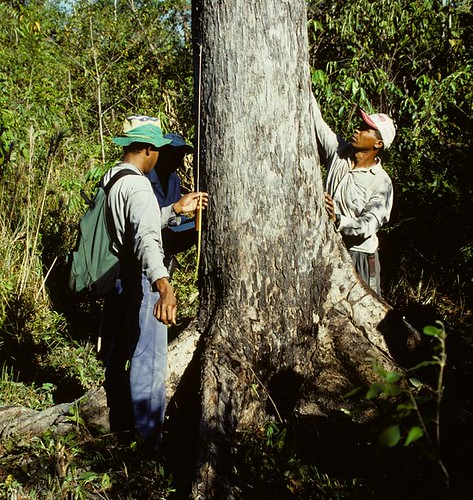
This post is part of the Science Tuesday feature series on the USDA blog. Check back each week as we showcase stories and news from the USDA’s rich science and research portfolio.
The very name mahogany is synonymous with luxury and sophistication. This beautiful wood has been traded internationally since the Spanish discovered natural forests around 1500 during colonization of Mexico and Central America. Mahogany is more than a pretty plank – its strength, light weight, resistance to rot, and structural stability made it an ideal timber for ocean-going vessels as well as furniture. Mahogany also occupies an important position in the ecosystem insofar as it is a large tree that emerges above the forest canopy. Many other species depend on it for habitat and survival.
Sadly, mahogany’s great value has also been its undoing over the past half century or so as modern industrial logging techniques made it commercially viable to extract mahogany from primary forests hundreds of miles from the nearest village or town in the Amazon Basin.
“The future of mahogany as we know it depends on whether sustainable harvest systems can be designed for natural forests where mahogany still survives, especially in South America,” said field ecologist Jimmy Grogan, whose mahogany research has been funded by the Forest Service through the Institute of Tropical Forestry since 1995.
To assist forest managers in sustaining timber production of mahogany from natural forests so the species may continue to benefit current and future generations, Grogan and his colleagues developed the Big-Leaf Mahogany Growth & Yield Model that simulates logging and then “grows” populations between harvests according to demographic algorithms constructed from 15 years of annual census data in Brazil.
The model simulates actual mahogany populations in Brazil. Once the population data is in the model, it is programmed with several rules or parameters, such as the number of years between harvests, the minimum legal cutting diameter (currently 60 cm in Brazil), the percentage of commercial-sized trees that must be retained after logging for regeneration purposes, and the minimum density of commercial trees below which logging is not allowed.
Grogan’s work also receives generous support from Brazilian timber companies that own the sites where he and his colleagues conduct their research.
The Big-Leaf Mahogany Growth & Yield Model was built from demographic data published in scientific journals over the past decade. The Model and articles on which it is based are available online at http://www.swietking.org/.
